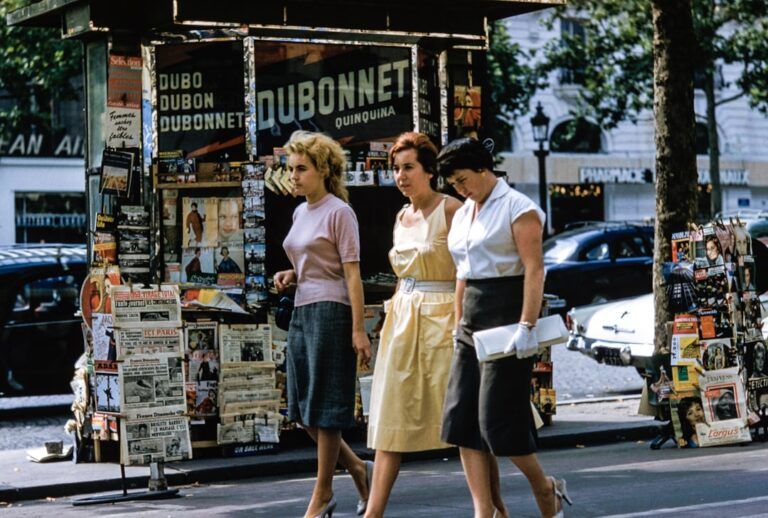Coffee is one of the most popular beverages in the world, enjoyed by millions of people every day. It is made from the roasted seeds of the Coffea plant, which are commonly referred to as coffee beans. These beans are then ground and brewed to create the delicious and aromatic beverage that so many people love. There are two main species of coffee beans that are widely used in the production of coffee: Arabica and Robusta. Arabica beans are known for their smooth and mild flavor, while Robusta beans have a stronger, more bitter taste. Understanding the differences between these two types of beans is essential for creating a high-quality coffee experience for your customers.
In addition to the type of bean used, the flavor and quality of coffee can also be influenced by factors such as the region where the beans are grown, the altitude at which they are cultivated, and the processing methods used. For example, beans grown at higher altitudes tend to have a more complex and flavorful profile, while beans that are processed using the wet method often have a brighter acidity and cleaner taste. By understanding these basic principles of coffee production, you can ensure that you are selecting the best beans for your coffee shop and providing your customers with a truly exceptional coffee experience.
Key Takeaways
- Coffee is made from roasted coffee beans and contains caffeine, which is a natural stimulant.
- Arabica and Robusta are the two main types of coffee beans, each with its own unique flavor profile and characteristics.
- Different brewing methods, such as drip, French press, and espresso, can result in varying flavors and strengths of coffee.
- Specialty coffee drinks, such as lattes, cappuccinos, and macchiatos, can be created by adding milk, flavored syrups, or whipped cream to espresso.
- Offering a variety of milk options, such as whole milk, almond milk, and oat milk, can cater to customers with different dietary preferences and restrictions.
- Incorporating seasonal and limited-time offerings, such as pumpkin spice lattes in the fall or iced coffee in the summer, can attract customers and keep the menu fresh.
- Designing an appealing and user-friendly menu with clear descriptions and attractive visuals can help customers make informed choices and enhance their overall experience.
Selecting the Right Coffee Beans
When it comes to selecting the right coffee beans for your coffee shop, there are several factors to consider. First and foremost, it’s important to choose high-quality beans that have been sourced from reputable suppliers. Look for beans that have been ethically and sustainably sourced, as this not only ensures the best possible flavor and quality but also aligns with the values of many modern consumers. Additionally, consider the flavor profile that you want to offer your customers. If you want to provide a smooth and mellow coffee experience, opt for Arabica beans. On the other hand, if you want to offer a more robust and intense flavor, consider incorporating Robusta beans into your selection.
Another important consideration when selecting coffee beans is the roast level. Coffee beans can be roasted to varying degrees, ranging from light to dark. Each roast level imparts different flavors and aromas to the coffee, so it’s important to choose the right roast level based on the type of coffee you want to offer. For example, a light roast will preserve the unique characteristics of the bean and highlight its natural acidity, while a dark roast will result in a richer and more intense flavor profile. By carefully selecting the right coffee beans for your shop, you can ensure that you are providing your customers with a diverse and high-quality coffee experience.
Exploring Different Brewing Methods
There are numerous brewing methods that can be used to prepare coffee, each of which produces a unique flavor profile and aroma. Some of the most popular brewing methods include drip brewing, French press, pour-over, espresso, and cold brew. Drip brewing is one of the most common methods and involves hot water being poured over ground coffee beans contained in a filter. This method produces a clean and consistent cup of coffee that is suitable for large volumes. French press brewing, on the other hand, involves steeping coarsely ground coffee in hot water and then pressing the grounds to separate them from the liquid. This method results in a full-bodied and rich cup of coffee with a robust flavor.
Pour-over brewing is a manual method that involves pouring hot water over ground coffee in a filter, allowing the water to drip through and extract the flavors from the coffee. This method produces a clean and bright cup of coffee with a delicate flavor profile. Espresso brewing is a highly concentrated method that involves forcing hot water through finely ground coffee under pressure. This method results in a strong and intense shot of coffee that is often used as a base for specialty drinks such as lattes and cappuccinos. Cold brew brewing involves steeping coarsely ground coffee in cold water for an extended period, resulting in a smooth and mellow cup of coffee with low acidity. By exploring different brewing methods, you can offer your customers a diverse range of coffee experiences that cater to various preferences and tastes.
Creating Specialty Coffee Drinks
In addition to offering traditional brewed coffee, creating specialty coffee drinks can be a great way to attract customers and differentiate your coffee shop from competitors. Specialty drinks such as lattes, cappuccinos, macchiatos, and mochas are popular choices that can be customized with different flavors and syrups to create unique and delicious beverages. For example, offering flavored syrups such as vanilla, caramel, hazelnut, or chocolate can allow customers to personalize their drinks and create their own signature combinations. Additionally, incorporating alternative milk options such as almond milk, oat milk, or soy milk can cater to customers with dietary restrictions or preferences.
Another way to create specialty coffee drinks is by experimenting with different brewing methods and techniques. For example, incorporating cold brew or nitro cold brew into your menu can provide customers with a refreshing and smooth alternative to traditional hot coffee. Additionally, offering seasonal specialty drinks such as pumpkin spice lattes in the fall or peppermint mochas in the winter can create excitement and anticipation among your customers. By creating a diverse menu of specialty coffee drinks, you can appeal to a wide range of tastes and preferences and provide an elevated coffee experience for your customers.
Offering a Variety of Milk Options
Incorporating a variety of milk options into your menu is essential for catering to customers with dietary restrictions or preferences. In addition to traditional dairy milk, consider offering alternative options such as almond milk, oat milk, soy milk, or coconut milk. These alternative milks are popular choices among consumers who are lactose intolerant, vegan, or simply looking for healthier alternatives to dairy products. By offering a diverse selection of milk options, you can ensure that all of your customers can enjoy their favorite coffee drinks without compromising on taste or quality.
Furthermore, offering alternative milk options can also open up new opportunities for creating unique and innovative specialty drinks. For example, using almond milk in a latte or oat milk in a cappuccino can result in creamy and flavorful beverages that cater to specific dietary preferences. Additionally, incorporating alternative milks into your menu can demonstrate your commitment to inclusivity and sustainability, which can resonate with modern consumers who prioritize ethical and environmentally friendly practices. By offering a variety of milk options, you can enhance the overall customer experience at your coffee shop and attract a broader customer base.
Incorporating Seasonal and Limited-Time Offerings

Incorporating seasonal and limited-time offerings into your menu is an effective way to keep your offerings fresh and exciting for your customers. Seasonal drinks such as pumpkin spice lattes in the fall or iced lavender lattes in the spring can create anticipation and drive customer engagement. Additionally, offering limited-time specialty drinks or collaborations with local artisans or brands can create buzz and attract new customers to your shop. By regularly updating your menu with new and innovative offerings, you can keep customers coming back for more and maintain a sense of excitement and novelty around your brand.
Furthermore, seasonal and limited-time offerings provide an opportunity to experiment with new flavors, ingredients, and brewing methods. For example, incorporating seasonal spices or flavors into your drinks can showcase creativity and innovation while aligning with current trends and consumer preferences. Additionally, collaborating with local suppliers or producers for limited-time offerings can support the community and create a unique selling point for your business. By incorporating seasonal and limited-time offerings into your menu, you can create a dynamic and ever-evolving experience for your customers while staying ahead of industry trends.
Designing an Appealing and User-Friendly Menu
Designing an appealing and user-friendly menu is crucial for effectively showcasing your offerings and guiding customers through their decision-making process. Consider organizing your menu into categories such as brewed coffee, specialty drinks, seasonal offerings, and alternative milk options to make it easy for customers to navigate and find what they’re looking for. Additionally, use descriptive language and imagery to highlight key features of each drink, such as flavor profiles, ingredients, or brewing methods. This can help customers make informed choices and feel confident in their selections.
Furthermore, consider incorporating visual elements such as illustrations or photographs to enhance the overall appeal of your menu. This can help create a visually engaging experience for customers while showcasing the creativity and craftsmanship behind your drinks. Additionally, consider using digital menu boards or interactive displays to provide real-time updates on seasonal or limited-time offerings, as well as information on sourcing or sustainability practices. By designing an appealing and user-friendly menu, you can effectively communicate your brand’s story and values while providing an enjoyable and informative experience for your customers.
In conclusion, understanding the basics of coffee production, selecting high-quality beans, exploring diverse brewing methods, creating specialty drinks, offering alternative milk options, incorporating seasonal offerings, and designing an appealing menu are all essential elements for running a successful coffee shop. By carefully considering each of these aspects and continuously striving for excellence in every aspect of your business operations, you can provide an exceptional coffee experience for your customers while setting yourself apart in a competitive market.
If you’re looking to perfect your coffee menu, you’ll also want to ensure that your coffee equipment is in top shape. This includes keeping your coffee thermos clean and free of any lingering tastes. Check out this article on how to clean a coffee thermos for some helpful tips on maintaining your equipment. A clean and well-maintained thermos can help ensure that your coffee tastes its best when served to your customers.
FAQs
What should be included in a perfect coffee menu?
A perfect coffee menu should include a variety of coffee options such as espresso, cappuccino, latte, macchiato, americano, and brewed coffee. It should also offer a selection of milk options, flavored syrups, and alternative milk choices such as almond, soy, or oat milk.
How can a coffee menu cater to different preferences?
A coffee menu can cater to different preferences by offering a range of coffee strengths, flavors, and customization options. This can include options for different roasts, flavored syrups, and alternative milk choices to accommodate various dietary restrictions and taste preferences.
What are some important considerations when crafting a coffee menu?
When crafting a coffee menu, it’s important to consider the target audience, the local coffee culture, and the overall theme or concept of the coffee shop. Additionally, considering the seasonality of certain drinks and staying updated with current coffee trends can also be important factors to consider.
How can a coffee menu stand out from competitors?
A coffee menu can stand out from competitors by offering unique and innovative coffee creations, showcasing specialty or single-origin coffee options, and providing a welcoming and inviting atmosphere. Additionally, incorporating creative and visually appealing menu designs can also help a coffee menu stand out.






